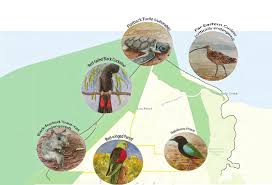REVIEW

Image 1: Lee Point Wildlife
Introduction
Lee Point – Buffalo Creek (-12.33, 130.90) is located approximately 20-kilometres from Darwin city in tropical northern Australia (Figure 1). The Darwin region has a tropical climate, featuring a wet-dry cycle with an average annual rainfall of 1600 mm, most of which occurs during the wet season (December to March). The cyclone season begins in November and cyclones can occur up until April. Throughout most of the year the mean maximum temperature is 32°C, except during the monsoon season when temperatures drop and locals will tell you there is a chill to the air.
The Darwin coastal region is macrotidal, with a maximum tidal range of 8.1 m, with strong bi-directional velocities. The highest tides coincide with the austral summer and monsoon season. There is minimal wave activity along Darwin coastlines, except during exceptional storm activity (during the monsoonal wet season). The tidal cycles in Darwin are semi-diurnal, usually with a high-tide in the morning and a high-tide in the evening. During low tides the intertidal zone is exposed which provides feeding zones for migratory shorebirds and other waterfowl.
Lee Point – Buffalo Creek beach makes up 222 hectares of the 1361 hectares of Casuarina Coastal Reserve and is managed by the Parks and Wildlife Commission of the Northern Territory (Parks and Wildlife Commission Northern Territory 2016). Casuarina Coastal Reserve is the most highly visited park or reserve in the Northern Territory (Parks and Wildlife Commission Northern Territory 2016). The reserve has high recreational, cultural and environmental value (Power 1978, Chapman 1984). It is relatively easy to access this reserve and the places to see birds.
Buffalo Creek is a part of the Shoal Bay Important Bird Area due to the presence of listed threatened bird species, and range restricted species such as the Chestnut Rail (Eulabeornis castaneoventris). It’s no surprise that this area is a popular spot for birdwatching and wildlife watching in general with such high diversity across the range of habitat. There have been 224 species of bird recorded in the Lee Point – Buffalo Creek area, with 71 of those on the beach, and the remaining found in the coastal monsoon forest and bordering mangrove forest.
Interesting geological & social history of the area
Lee Point – Buffalo Creek is a beach of calcareous sand with an underlying lateritic bed (Power 1978). It has an extensive dune system and mangrove-backed mudflats (Chatto 2003). The beach dunes back on to mangrove forest and a closed-monsoon forest (Power 1978). Adjacent to Lee Point is Casuarina beach and Buffalo Creek. The point at Lee Point has a rocky outcrop made up of laterite (Power 1978). These rocks provide roosting habitat for shorebirds and waterbirds during intermediate tides and are inundated during spring-high tides. This rocky outcrop is also a popular fishing spot during high tides. Lee Point – Buffalo Creek beach is part of a tidal wetland community with varying gradients of tidal inundation, influencing the series of habitats from seawards to landwards.
The boat ramp at Buffalo Creek is a popular spot for fishing, crabbing and launching boats. The local Larrakia Indigenous people often collect shellfish from the nearby mangroves, or catch fish from the creek and cook these foods on an open fire along the sand dunes and forests.
There is an old pill bunker from World War II along the edge of the monsoon forest between Lee Point and Buffalo Creek, close to the bird hide and walking paths. This was used as an observation post, which formed part of the ‘stop line’ used against invasion by the sea during World War II.
Plants & animals of the area
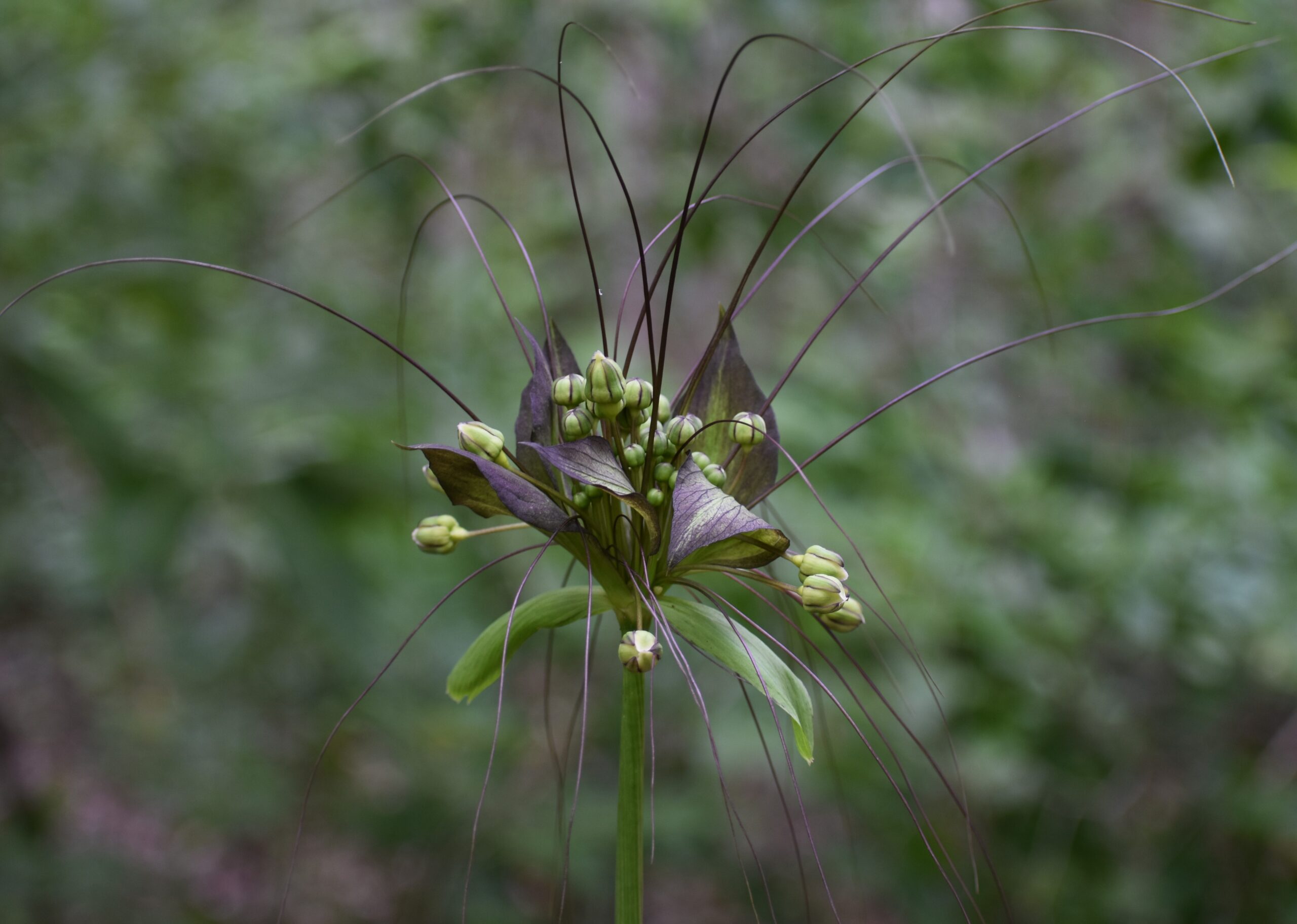
Image 2: Bat Plant Flower taken in the woodland.
Lee Point – Buffalo Creek has an extensive coastal monsoon forest that borders the coastline. It is primarily made up of monsoon vine thicket and bordered by open woodland beyond the forest. There is a mangrove forest that lines Buffalo Creek and this extends up behind the sand dunes of Lee Point beach. The number of mangrove seedlings in this small creek is increasing every year and it is not uncommon to see mangrove seedlings attempting to attach to the tideline of the beach.
Casuarina trees back the sand dunes of Lee Point beach and their range across the beach has extended eastwards along the beach in an eight-year period. It is thought that their expansion along the beach is forcing migratory shorebirds to roost further east to keep away from tall forested areas.
Flatback Turtles (Natator depressus) nest along Sandy Creek beach, to the south-west of Lee Point and there have also been records of turtle tracks on Lee Point beach. Hatchlings are removed from the nest and released in large groups with the local Darwin community.
There are Saltwater Crocodiles (Crocodylus porosus) in Buffalo Creek and occasionally they can be spotted swimming along the coast. Crocodiles can kill people and Parks and Wildlife Northern Territory advise against entering the water.
The forested area behind Lee Point and Buffalo Creek is a good place to go spotlighting at night for mammals such as the Northern Brown Bandicoot (Isodon macrourus).
Birds of the area
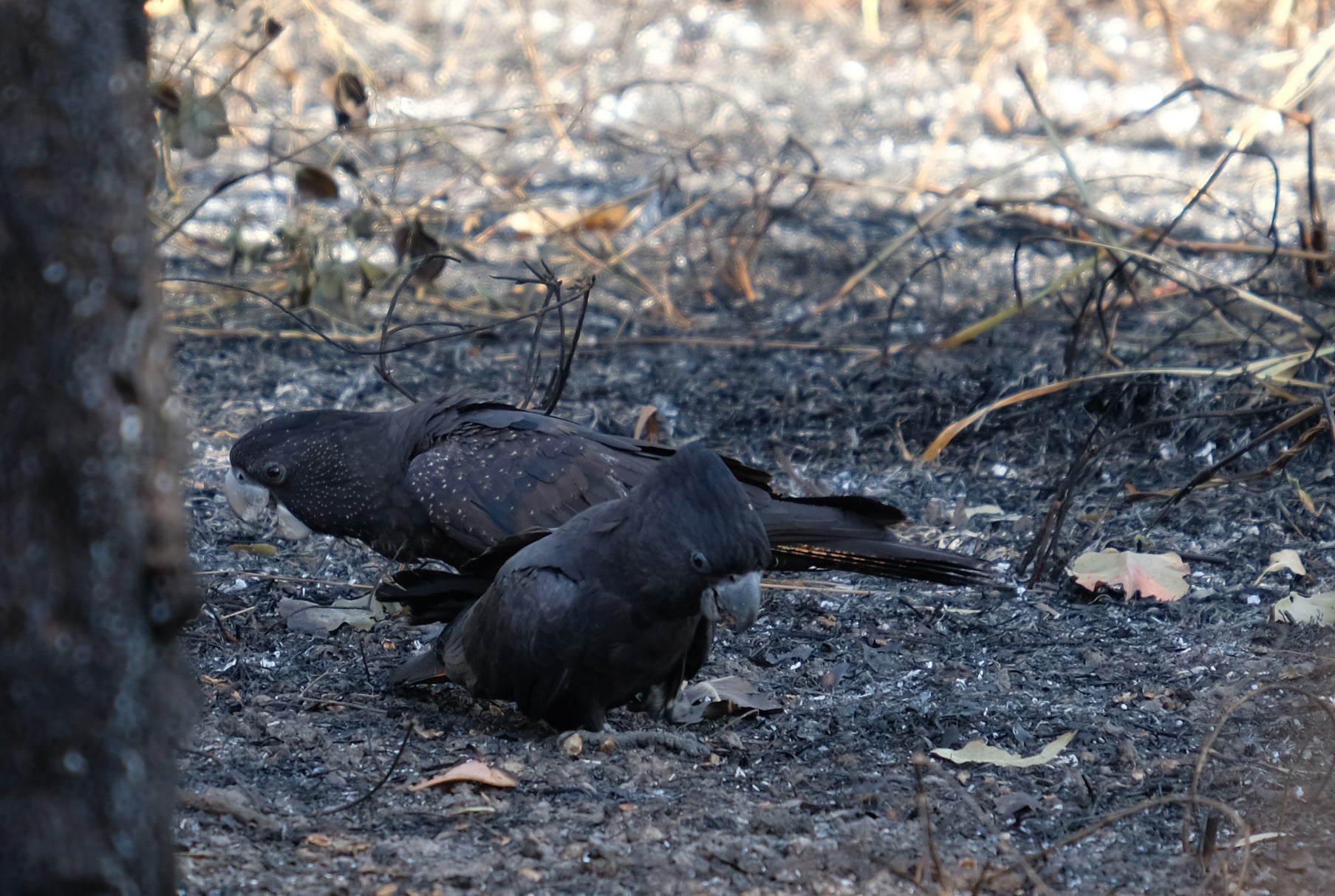
Image 3: Black Cockatoos clean up after a fire.
Shorebirds, seabirds, and coastal birds
The stretch of beach from Lee Point to Buffalo Creek is classified as a no-dog zone under the Parks and Wildlife Commission Northern Territory, due to the presence of shorebirds in nationally and internationally important numbers. The reserve supports up to 10,000 shorebirds from over 25 species, and the beach has at times provided habitat for vagrant birds. Over the years there has been Black-headed Gull (Chroicocephalus ridibundus), Franklin’s Gull (Leucophaeus pipixcan), Lesser Black-backed Gull (Larus fuscus), Black-tailed Gull (Larus crassirostris), Kentish Plover (Charadrius alexandrines), Christmas Island Frigatebird (Fregata andrewsi) and others that were not supported through photographs or an adequate description to be accepted by the BirdLife Australia Rarities Committee (https://birdlife.org.au/conservation/science/rarities-committee). Nevertheless, this coastal stretch of habitat faces north towards the Timor Sea and there is no doubt that many other rare birds may be using this beach and may even go unnoticed.
During the monsoon season when intense storms and low-pressure systems are common across the Timor and Arafura Seas, there is a high chance of seabirds turning up on this beach. It is not uncommon to see Brown Boobies (Sula leucogaster), Common Noddies (Anous stolidus), Bridled Terns (Onychoprion anaethetus), and Shearwaters (Puffinus sp.) turn up on the beach exhausted and in need of a rest. There was even an Abbott’s Booby (Papasula abbotti) that was found exhausted and taken in to care, but later died. Fortunately, not all seabirds that turn up in Darwin are in dire straits, with many frigatebirds flying over Lee Point beach during the monsoon season. Lesser Frigatebird (Fregata ariel) is the more common species flying over the coast, but it is good practice to inspect the plumage markings of all frigatebirds.
But for people that visit Darwin at any time of the year, the one spot that should be on everyone’s list is Lee Point, firstly because of the shorebirds, and secondly for the abundance of other species you can see in surrounding habitats. The shorebirds attract tourists from other parts of Australia and the world. It is the best place to bump into local Darwin birdwatchers when the tide is high.

Image 4: Large-tailed Nightjar roosting near the Lee Point.
The best tide to visit this beach if you are specifically looking for shorebirds is any spring tide >6.5 m, as this is when birds will be roosting and they are much easier to see huddled together pushed up by the tide. Most shorebirds roost halfway along Lee Point beach as you walk towards Buffalo Creek. It is a good idea to keep some distance from the birds to avoid disturbing them. From September through until about March you can see up to 25 species of migratory shorebird on this beach. The most abundant species is Great Knot (Calidris tenuirostris), with records of up to 9000 birds roosting during high tide. During tides above 7 m during the monsoon season, there is very little beach left and the birds may depart the site to look for suitable roosting habitat elsewhere. The timing of high tides also coincides with optimal beach-walking and dog-walking times, and this poses a threat to shorebirds roosting on the beach. Despite the zoning regulation of Lee Point – Buffalo Creek beach, many people still walk their dogs there causing shorebirds to take off and use energy stores that would otherwise be used for migration (Lilleyman et al. 2016). Because of this there has been a push to increase the awareness of these birds that call Lee Point home. You can view beautifully made shorebird statues on the grassy patch before you enter the beach at Lee Point. These art installations were commissioned by Parks and Wildlife and designed by local installation artist Aly de Groot.
Monsoon forest birds
There is a great walking trail that goes from the woodland and beach area of Lee Point (access is from the northern Lee Point car park), along the back from the sand dunes, through mangrove forest, and then through the monsoon forest. This walk takes you through a good variety of environments and gives you access through an otherwise almost impenetrable forest. If you are not up for a long walk, then you can bird your way along the monsoon forest by travelling along Buffalo Creek Road. If you go early in the morning you can often hear Large-tailed Nightjar (Caprimulgus macrurus) calling, but once the day has begun, it is time for Rainbow Pitta (Pitta iris), Rose-crowned Fruit-dove (Ptilinopus regina), Emerald Dove (Chalcophaps indica) to start calling. Also listen out for Green-backed Gerygone (Gerygone chloronotus), Grey Whistler (Pachycephala simplex), Arafura Fantail (Rhipidura dryas) calling on the outskirts of the forest.
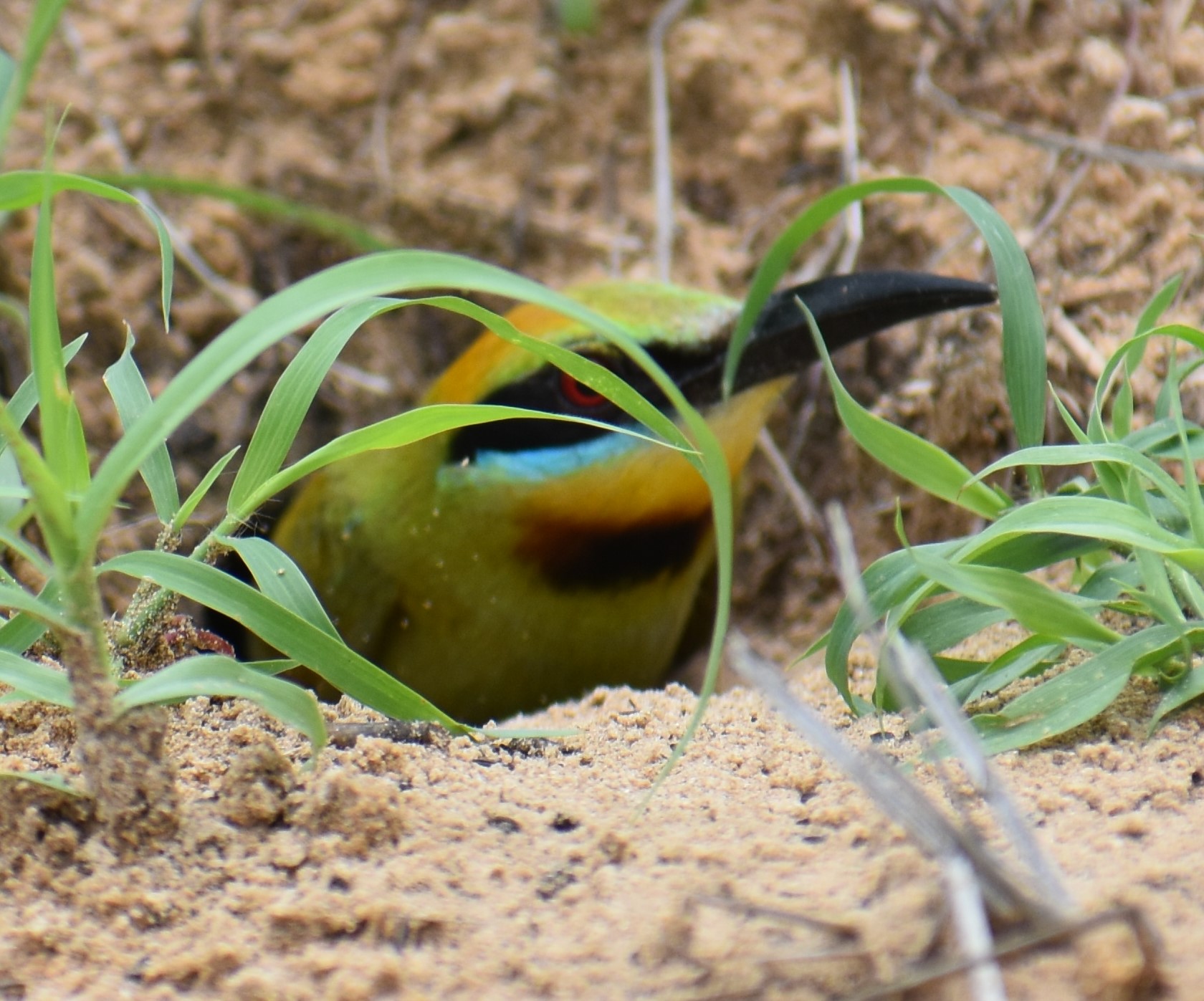
Image 5: Rainbow Bee-eater emerging from it’s nest after feeding young.
Listen out for Varied Lorikeet (Psitteuteles versicolor) as you walk along the road at the edge of the forest as Varied Lorikeet often call as they fly in flocks. They are fast moving and easier to hear than see, but sometimes you can spot these small parrots feeding in the woodland across from the monsoon forest along Buffalo Creek Road. Look for honeyeaters also feeding in blossoming trees; Helmeted Friarbird (Philemon buceroides), Little Friarbird (Philemon citreogularis), White-gaped Honeyeater (Lichenostomus unicolor), Rufous-banded Honeyeater (Conopophila albogularis), Brown Honeyeater (Lichmera indistincta), Dusky Honeyeater (Myzomela obscura), and more recently, Gouldian Finch (Erythrura gouldiae).
Mangrove birds and raptors
There is no doubt that the bird that everyone looks for in Darwin mangroves is the Chestnut Rail. This species can be found in mangroves and fringing habitat such as mudflats along the coastline of northern Australia. Look across the creek from the boat ramp for Chestnut Rail, but if it is busy then it’s best to go further along through the mangroves on falling tides of approximately 5 m. There is a well-established path through the mangroves that you can follow until you get to the first bend in the creek. This is a good spot to look for Chestnut Rail and occasionally Great-billed Heron (Ardea sumatrana). Listen out for the calls of Azure Kingfisher (Alcedo azurea) and Shining Flycatcher (Myiagra Alecto). Black Butcherbird (Cracticus quoyi) often calls low from thick mangroves, and you can occasionally hear Little Shrike-thrush (Colluricincla megarhyncha) and Mangrove Grey Fantail (Rhipidura phasiana) calling as you work your way through the mangroves. Red-headed Honeyeater (Myzomela erythrocephala) moves along the tops of mangrove trees as it feeds on flowering blossom.
Just before dusk you will often see small parties of Red-winged Parrot (Aprosmictus erythropterus) flying in to the mangroves from the west. These birds roost communally in the mangroves. Most probably to remain safe from predators. Birds of prey also use the mangrove forest and can be seen flying high overhead or swooping down for prey along the creek or tidal flat. Brahminy Kite (Haliastur indus), Black Kite (Milvus migrans), Whistling Kite (Haliastur sphenurus) and White-bellied Sea-eagle (Haliaeetus leucogaster) are common.
Best places to see the birds and wildlife generally
If you are visiting for a short period and want to get see a good variety of birds, then it is a good idea to park at the first car park at the bend of Buffalo Creek and walk along the road so you have monsoon forest on one side of you and woodland on the other side. You often hear Varied Triller (Lalage leucomela) and Spangled Drongo (Dicrurus bracteatus) calling from high up in the forest, and where there is more open woodland listen out for Forest Kingfisher (Todiramphus macleayii). A short walk along the edges of the mangrove forest and woodland will also produce some nice birds.
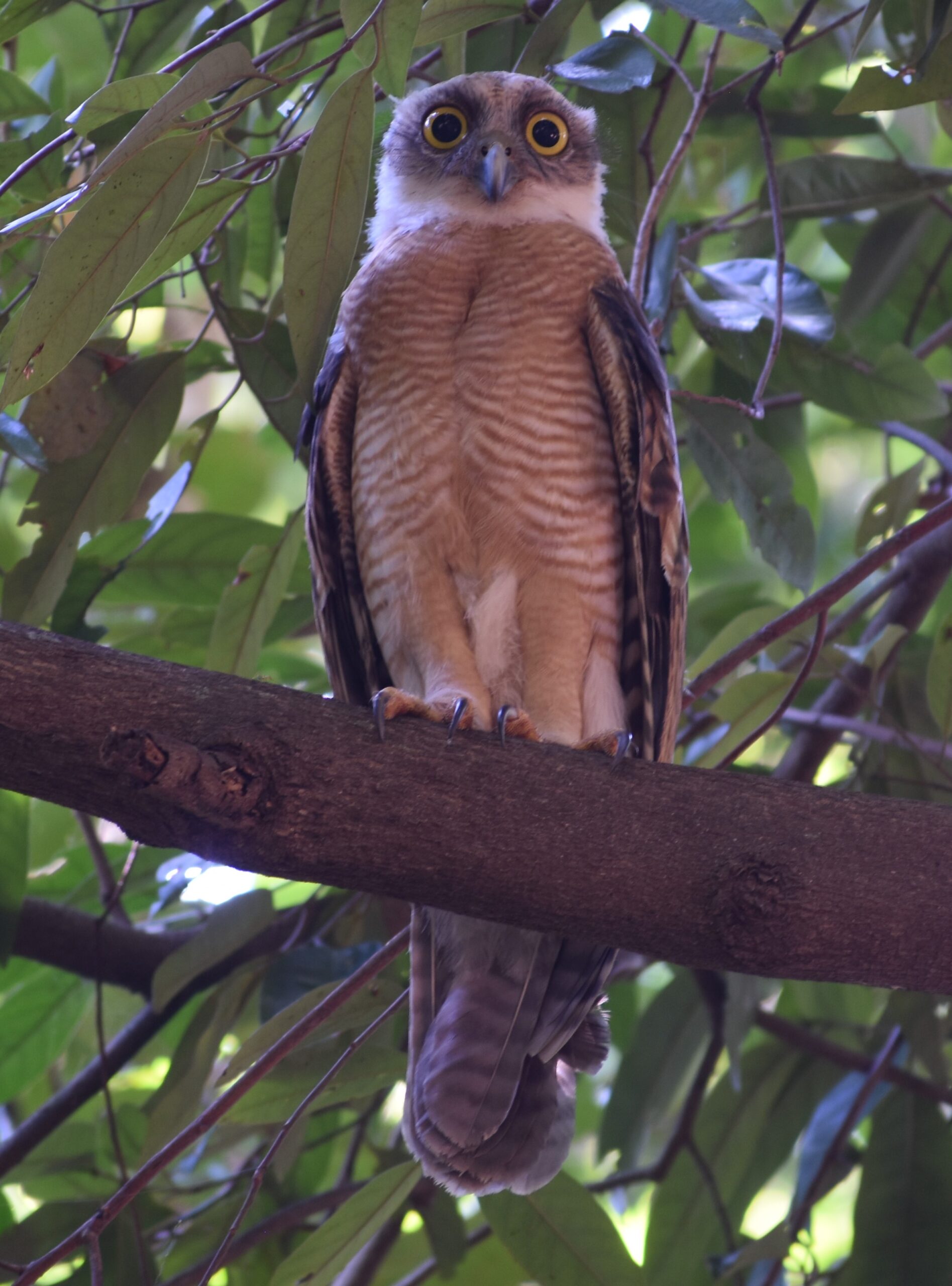
Image 6: Rufus Owl (Juvenile).
But for the best birding at Lee Point – Buffalo Creek it is recommended to visit the beach on an early high tide to watch migratory shorebirds, terns and waterbirds, and then spend some time listening for forest birds, before attempting a walk through the mangroves for mangrove-specialist birds.
Conclusion
Lee Point – Buffalo Creek is a birding hot spot situated only 20 km from Darwin’s CBD. It is a short drive from Darwin International Airport and easily accessible for all levels of fitness. The variety of habitat types provides rich bird diversity for all birdwatchers and people to enjoy. The area can sometimes have lots of mosquitoes and midgies and it is recommended that visitors cover their skin to avoid itching bites. It is also advisable for visitors to travel with full sun protection and stay well hydrated as this part of the sunny Top End is very hot, especially on humid days when the air is thick but the prospect of a Chestnut Rail along the mangrove creek is too tantalising to head back to the car for more water! Happy birding!
Acknowledgements
I acknowledge Darwin Harbour’s Traditional Owners, the Larrakia people and their elders past and present. Thanks to the rangers and management team from Parks and Wildlife Northern Territory for supporting research work at Lee Point over the years. Thanks also go to the local Darwin people that have accompanied me to this site to go birdwatching, and to the Northern Territory Field Naturalists’ Club for their love for the area and for hosting field trips to this site.
This article is by
Birdwatching and wildlife-watching at Lee Point – Buffalo Creek, Darwin, Northern Territory
Dr Amanda Lilleyman
Threatened Species Recovery Hub, National Environment Science Programme, Charles Darwin University, Ellengowan Drive, Casuarina, Northern Territory 0909, Australia
